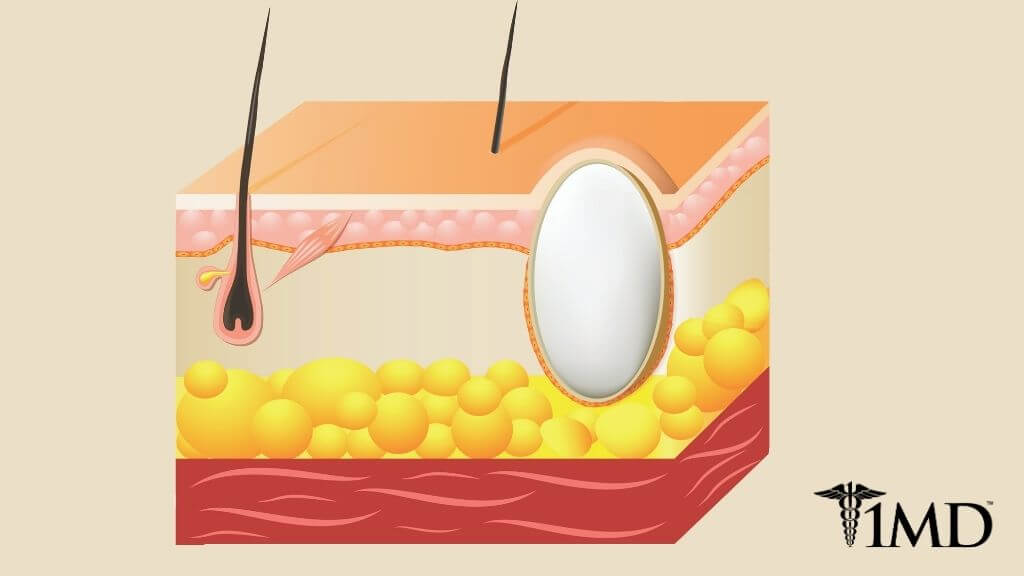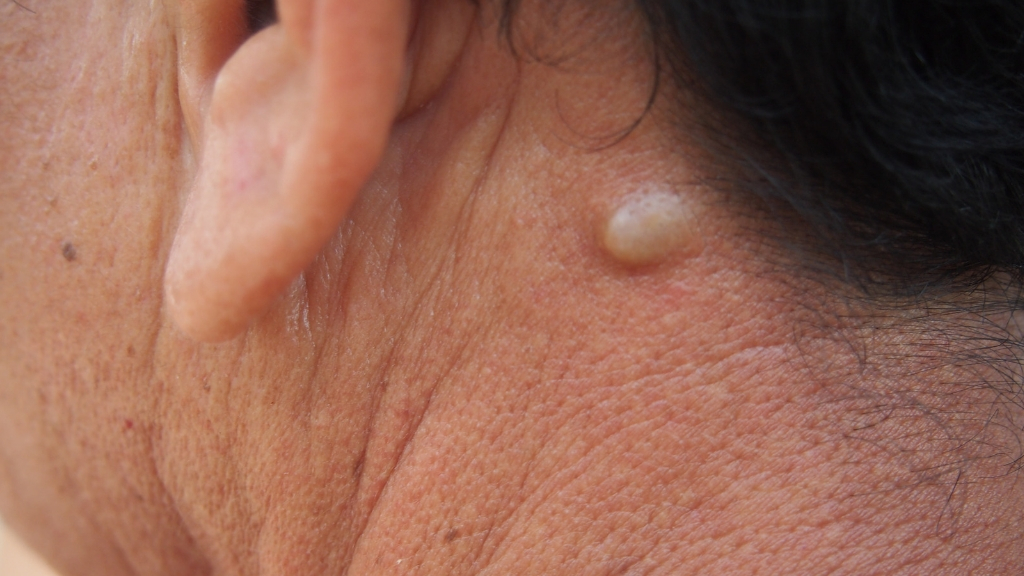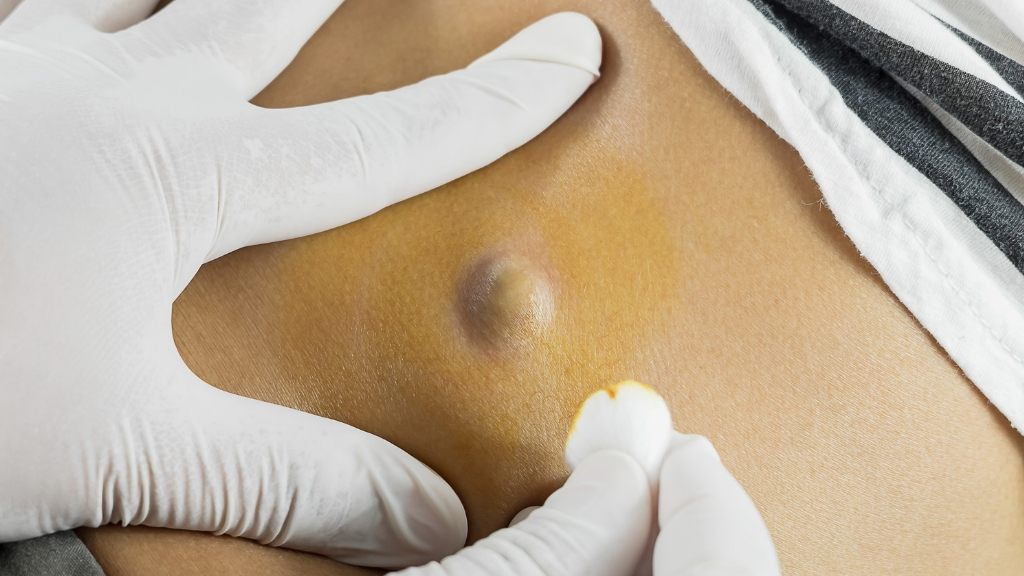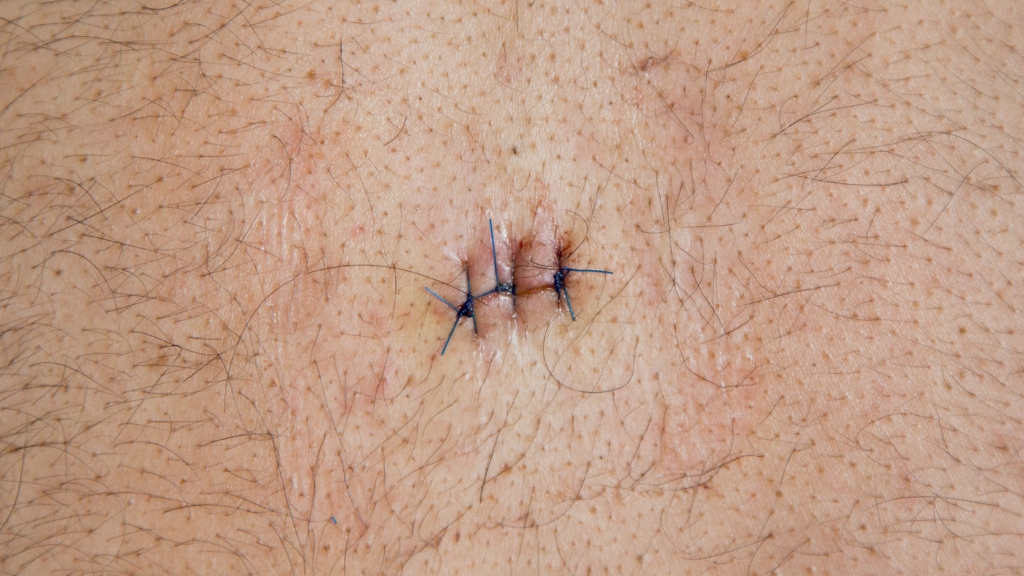What's a Sebaceous Cyst? Signs, Treatments, and What to Expect
5 minute read
Sebaceous cysts are fluid-filled bumps underneath the skin that are compressible but more rigid than a blister. They typically range from one centimeter to around five centimeters in diameter.
Most sebaceous cysts appear on the face, neck, and torso. They are non-cancerous and generally they’re not painful.
Sometimes they can become painful if they get inflamed or if they get infected. If this happens, you’ll want to seek medication attention and removing them is then an option. They can also be unsightly, and in these situations removal for aesthetic reasons is preferred by many patients.
In other cases, they can simply be ignored and kept clean, so an infection doesn’t occur and they will go away on their own.
Symptoms of a Sebaceous Cyst
If you’re wondering if the bump you have is a sebaceous cyst, you might want to see a healthcare provider to have a formal diagnosis. But there are some symptoms you can and should pay attention to:
Lump: Sebaceous cysts are almost always discovered because the patient notices a small lump. These lumps are not filled with fluid, like a blister, but they’re also not rock-hard.
Painless: Most sebaceous cysts are painless. If there is pain, then it’s probably because an infection has started. With the pain you will then find swelling, redness, and possibly drainage. Infections should be treated by your physician.

Moveable: Sebaceous cysts are almost always “free-floating” and not connected to other structures. If it doesn’t move and seems affixed, it is time to see professional healthcare advice, as there may be another issue.
What Causes a Sebaceous Cyst?
The exact causes of a sebaceous cyst are unknown. There are several different theories on why skin cysts occur, and it’s probably a combination of factors paired with each person’s unique body chemistry and skin type.
Cysts develop when normally multiplying cells move inward, rather than moving to the surface and replacing shed skin cells. In a normal situation the new skin cells rise from the dermis layer to the outer layer, the epidermis and then are shed and the process repeats over and over.
There are some genetic disorders, like Gardner’s syndrome, that are more commonly associated with cysts. There are also different types of cysts, like pilar cysts that might occur due to an inherited trait.
Other theories on how sebaceous cysts form focus on blocked sebaceous oil glands on the body, swollen hair follicles, and even skin trauma.
It is likely that you won’t know the exact reason for your sebaceous cyst, and since the cause does not affect the treatment plan, it’s not key to your treatment options

Treatment Options for a Sebaceous Cyst
Most sebaceous cysts are an annoyance and don’t need any treatment other than watching the area and keeping it clean. Some of these will eventually clear up on their own. They may return but will likely clear up over time again.
| Related: What Is Cellulitis? The Dangers, Signs, and Symptoms |
If your cyst appears to be infected, your healthcare provider will give you a couple options or will chart a course of treatment that includes some different treatments to ensure the infection is managed. For infections expect one or several of the following treatment options:
Draining: Removing the fluid will alleviate a lot of the pain and take away the inflammation.
Cyst wall: In addition to draining, your doctor may also take away the cyst wall to prevent it from filling with sebaceous oil in the future.
Removal: Taking out a sebaceous cyst is not a complicated procedure. It requires a small incision and then removing the entire cyst. Since they’re not attached to other structures in the body the procedure goes very quickly.
Medication: If there is an infection, then antibiotics are usually prescribed. Make sure you take your antibiotics for the entire course of treatment to avoid not fully treating the infection and to avoid future issues with antibiotics. You may also consider supplementing your antibiotics with probiotics.

The Bottom Line
The good news is that most sebaceous cysts are non-cancerous. For many people, a cyst is a simple irritation that will clear up on its own or remain a small imperfection in the skin.
For other people, if the cyst is in a noticeable place, they might prefer to have it removed rather than wait for it to go away naturally. Removal is relatively simple and quick, and most doctors will agree to this procedure even if it is just for cosmetic reasons.
If you notice a painless lump, it is probably nothing to worry about, but you should check with your doctor to be sure.












